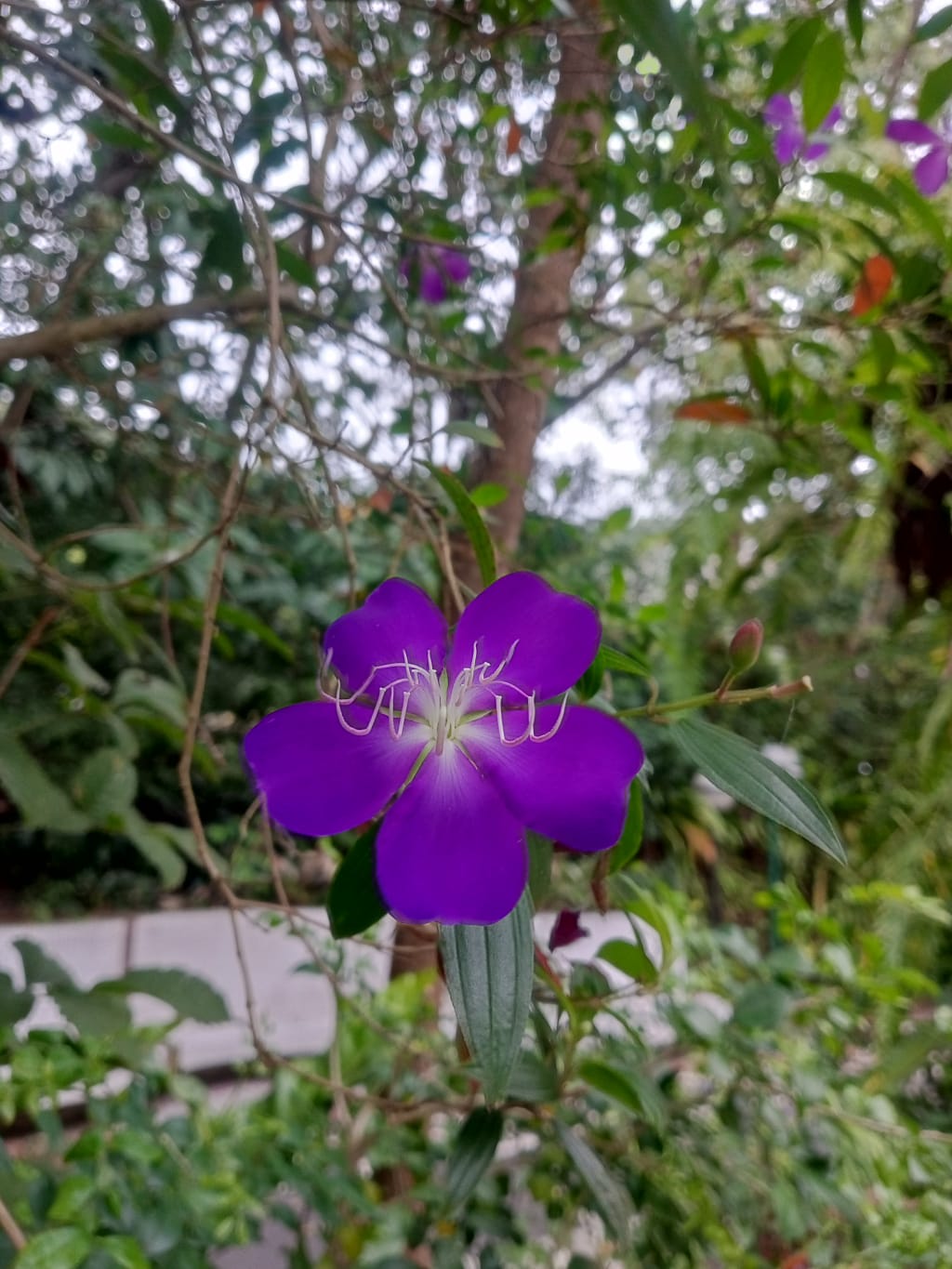Purple Flower called "Blue tongue"
Melastoma candidum

It has always been my dream to travel abroad, and I hoped to do so before turning 41. Just a few days before reaching that milestone, my dream came true as I finally had the opportunity to visit another country: Taiwan.
One of the places we visited was the Taipei Zoo, which provided an amazing experience for me. I encountered numerous animals that I had never seen before in my life. Also, it had been ages since the last time I visited a zoo.
At the Taipei Zoo, you're not just greeted by a wide variety of animals, but also by a beautifully preserved forest. While exploring, I came across this vibrant purple flower that really caught my eye. Now, I'm not usually one for flowers, but this one was special. It grabbed my attention so much that I had to snap a picture of it and even set it as my phone wallpaper.
Once I got back home, I couldn't shake off my curiosity about that purple flower. So, I did some research and found out it's actually called Melastoma candidum, or what we commonly know as "Malatungaw" here. What really surprised me was its common name: the blue tongue. I had a good laugh when I realized the irony of calling it "blue tongue" when it's clearly purple!
This flower grows in tropical countries in Asia, including India, Southeast Asia, and parts of Australia. Naturally, the species lives in a range of habitats, such as verdant grasslands, dense woods, and shaded woodlands. Wet and humid conditions are ideal for it to grow.
Melastoma candidum's most distinctive characteristic is its vivid purple blossoms, which stand out against the green leaves. These flowers are striking, with colors ranging from rich purple to soft lavender. Usually, there are five petals grouped in a radial arrangement. The blooms' remarkable structure and vivid coloring make them a sight to behold, drawing the attention of botanists, horticulturists, and nature lovers in equal measure.
I thought to myself, "I've seen this flower before, so why did it only catch my eye when I was in Taiwan?" Do they differ from one another? Does Taiwan's climate make it more beautiful? I suppose so because this flower grows here, too, although it's not as vibrant purple as what I've seen in Taiwan.
I learned that this flower possesses medicinal properties. Its crushed leaves can be applied to wounds to reduce bleeding and stop infection. It can also be used to treat constipation. To treat loose stools, you can either drink the boiling leaves or consume the sprouts. Eating the sprouts can assist in lowering blood pressure, and they can also be utilized to alleviate toothaches by rinsing with the root extract. Another method involves boiling the leaves and drinking the resulting mixture to relieve hemorrhoids.
Beyond its beauty this flower plays an important role in the ecosystem. As a flowering plant, it serves as a vital food source for pollinators, fostering biodiversity and promoting ecosystem resilience. The plant's foliage provides shelter and habitat for various small organisms, contributing to the overall health and balance of the ecosystem.
Then I realized, while this flower may not receive as much attention as the Panda in Taipei Zoo, it was there to add color to the scenery. It was there for me to notice and learn about how this “blue tongue” can contribute to the entire ecosystem, allowing me to appreciate not only its beauty but also its significance." I also learned that as of January 2020, this flower is still abundant in different parts of Asia. However, with ongoing changes in the environment and the effects of climate change, it too will soon become endangered. Therefore, taking care of the environment is everyone's responsibility, or else we may not have another chance to appreciate and witness the beauty of this flower and the nature as a whole."
About the Creator
Enjoyed the story? Support the Creator.
Subscribe for free to receive all their stories in your feed. You could also pledge your support or give them a one-off tip, letting them know you appreciate their work.





Comments
There are no comments for this story
Be the first to respond and start the conversation.